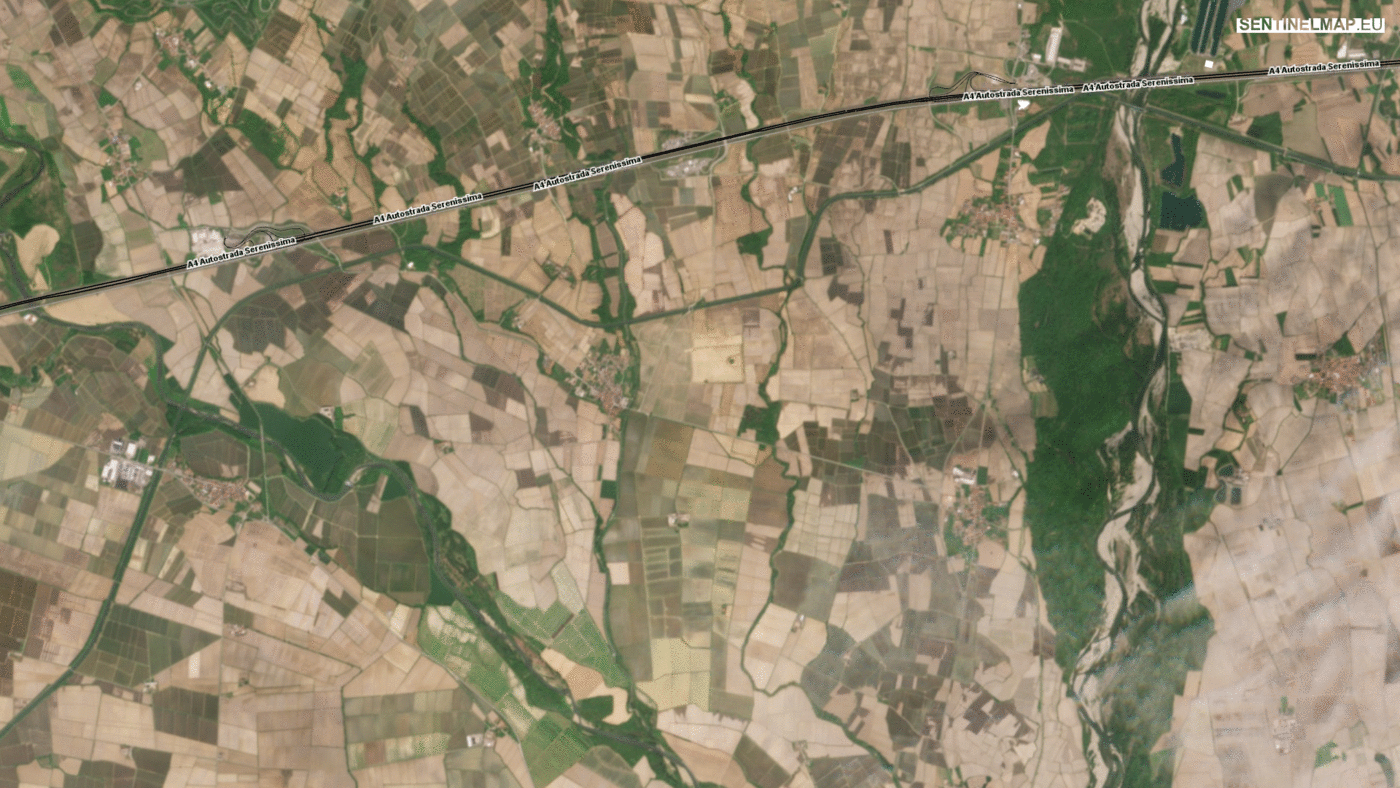Paddy fields in the Vercelli’s valley
by
The satellite images coming from the Sentinel–2 between April and June show the various phases of rice cultivation in the paddy fields located in the Vercelli’s valley, in northern Italy.
Contains modified Copernicus Sentinel data 2016 - sentinelmap.eu/#13/45.43/8.3
Paddy fields
The ears of rice ripen in September, but the work in the fields begins already at the end of winter. In fact, the rice paddies being submerged for much of the year, require often plowing to allow the aeration of the soils. There are two ways of planting rice: dry, before flooding the fields, and on a plot already flooded. In the latter case, rice seedlings are planted and grown in a dedicated parcel of land, and then transplanted on the final paddy; this operation takes place in June.
The paddy needs a stable water level maintained at about 10 cm above the roots. For this reason the soil needs to be leveled as accurately as possible and to have levees between 30 and 60 cm tall, in order to retain water to an acceptable level for the cultivations. Nowadays there is new technology to easy out the centuries old, painstaking work of building tanks and containment trays that follow the natural unevenness of the ground. Modern technology allows for a great accuracy, with error levels inferior to 0.5 cm every 500 meters, thanks to the advent of laser level meters mounted on tractors.
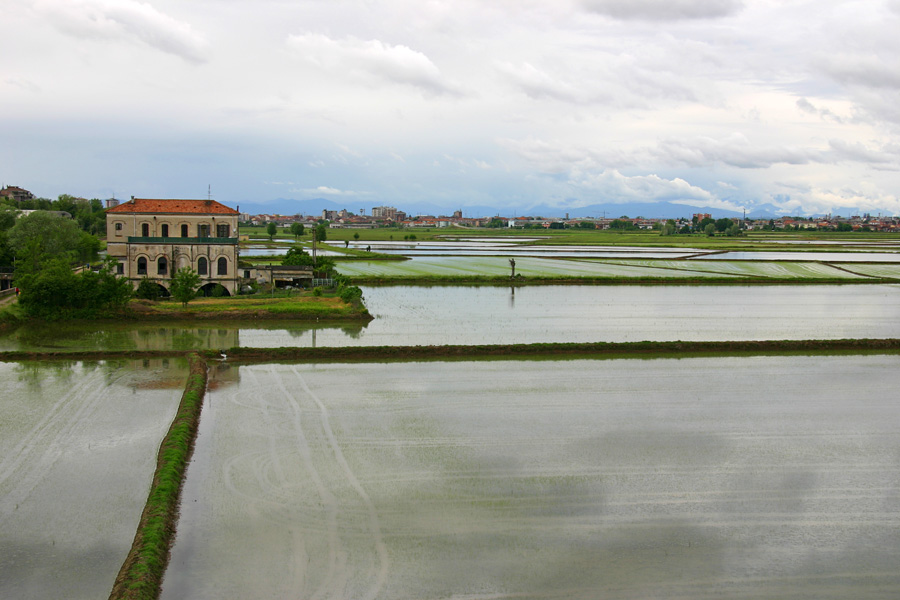 Source: Wikimedia Commons
Source: Wikimedia Commons
Cavour Canal
Flooding is fundamental to a paddy, and it is made possible only by numerous canals. Among those present in the Po region of northern Italy, the Cavour Canal is an impressive work of hydraulic engineering: in fact, it employs more than 300 siphons, the largest of which, more than 250 m long, runs under the Sesia river. The work of construction of the canal was entrusted to the engineer Carlo Noè in 1852 by the then president of the Council of Ministers of the Kingdom of Sardinia, Camillo Benso, count of Cavour. The works of realization, however, did not begin until a decade later, in 1862, after the unification of Italy and the death of Cavour himself.
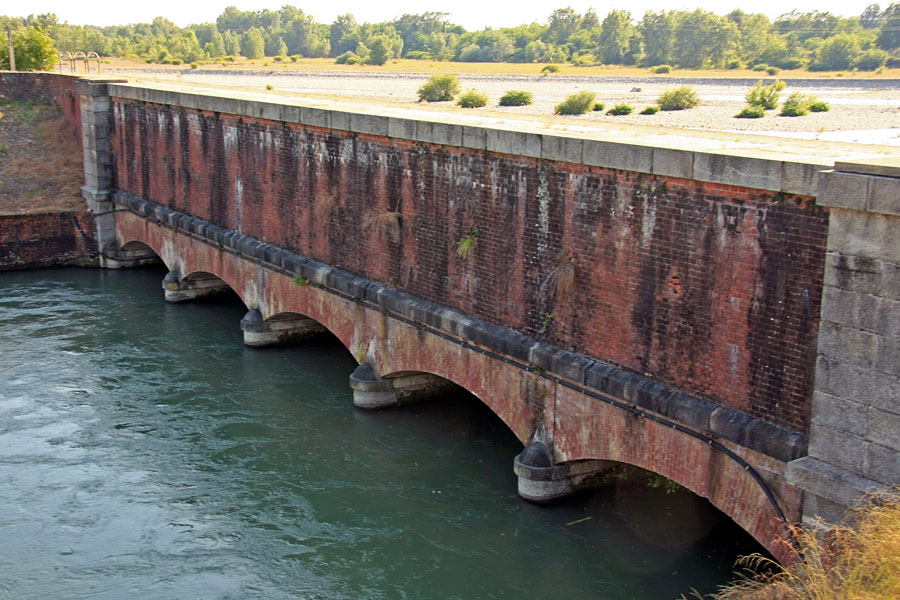 Source: Wikimedia Commons
Source: Wikimedia Commons
Paddy fields as a military resource
Meanwhile, on April 28, 1859 the Emperor of Austria declared war on Piedmont. Surprisingly though, on May 19 the Austrian troops had to fold without a fight due to the flooding of the rice fields of Vercelli. The work of flooding was entrusted to Noè himself. Hence the rice fields of Vercelli turned into an important strategic asset: the capital in those years was Turin, and although the Austrian troops had already captured the city of Novara, less than 100km apart, the army had to abandon any hope of conquering Piedmont after 17 days spent in a futile attempt to wade the Vercelli’s rice fields which were completely flooded.
The paddy fields as an integrated ecosystem
The rice field is a natural ecosystem, a little waterworld in itself. Herons, for example, prefer nesting around the paddy fields, in undergrowth or swampy reeds. Obviously, a large body of still water is always a fertile ground for the reproduction of mosquitoes; however, the paddy ecosystem has a place also for mosquitoes’ predators, frogs and fish, especially the Gambusia, commonly known as mosquitofish, that feeds on the larvae of this insect. This ecosystem is usually also a home for the black-winged stilt, a protected species in Italy. This little bird’s females often pretend to have a broken wing to distract potential predators from the nest, located on the edges of salt marshes, swamps and rice paddies.
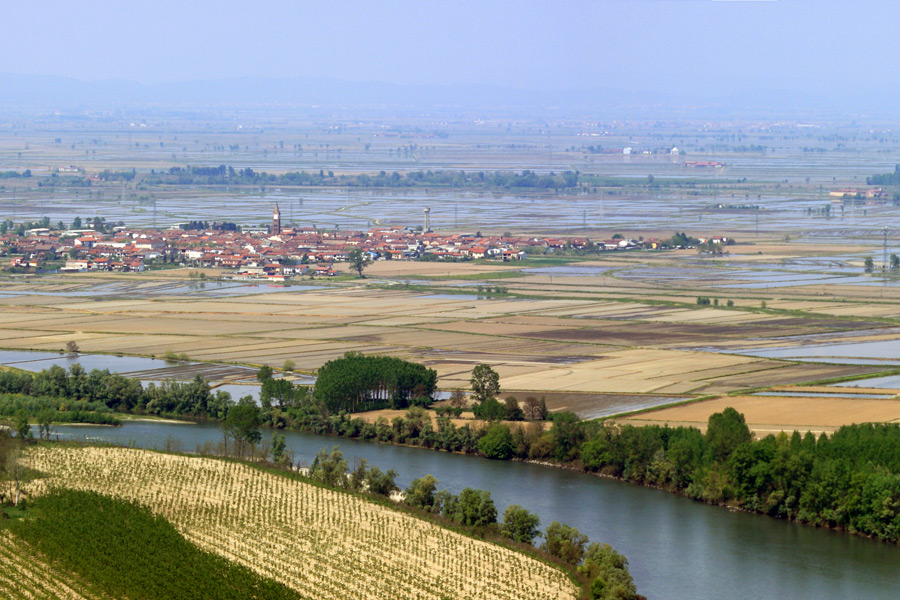 Source: Wikimedia Commons
Source: Wikimedia Commons
All this ecosystem has almost disappeared from the sixties onwards, following a reckless use of chemical herbicides and pesticides. In recent years however, the enacting of strict laws on the part of the local government has enabled the reconstitution of the ecosystem. In fact the herons and the stilts which had almost disappeared, returned to enliven the Po plains. Nowadays, unlike the past, it is not difficult to meet fishermen in the paddy fields: the fish are back and there is less risk of poisoning due to the fact that chemicals are usually administered early on, before flooding the rice fields. There is also an increase in the presence of swallows that make good meal of mosquitoes in the paddy. The original ecosystem though is not yet fully reconstituted: the modern system, which consists of leaving for a long time the rice fields dry, presents a problem for the frogs. The new methods of rice cultivation in the area, while being more friendly to many other species, nonetheless have significantly reduced the reproductive ability of amphibians.
April 2016
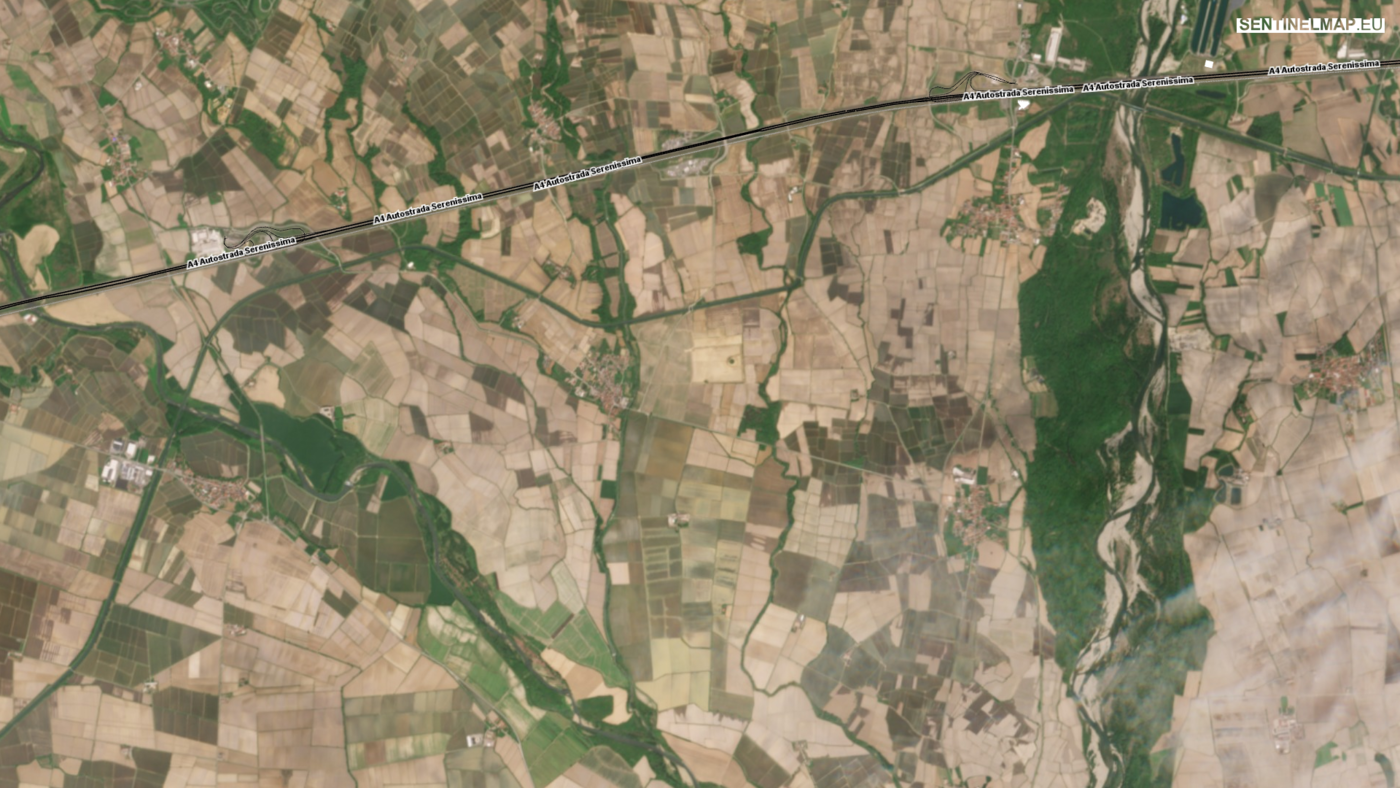
May 2016
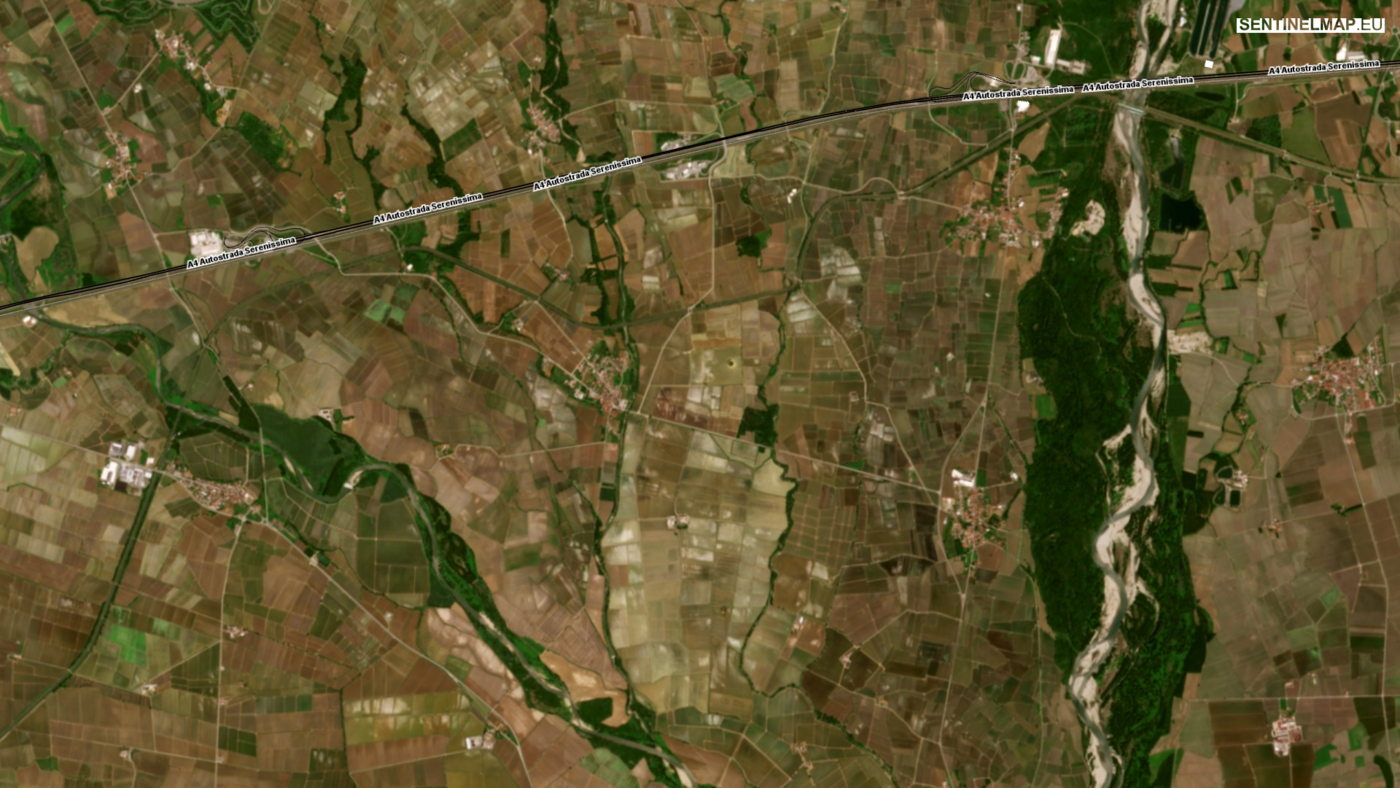
June 2016
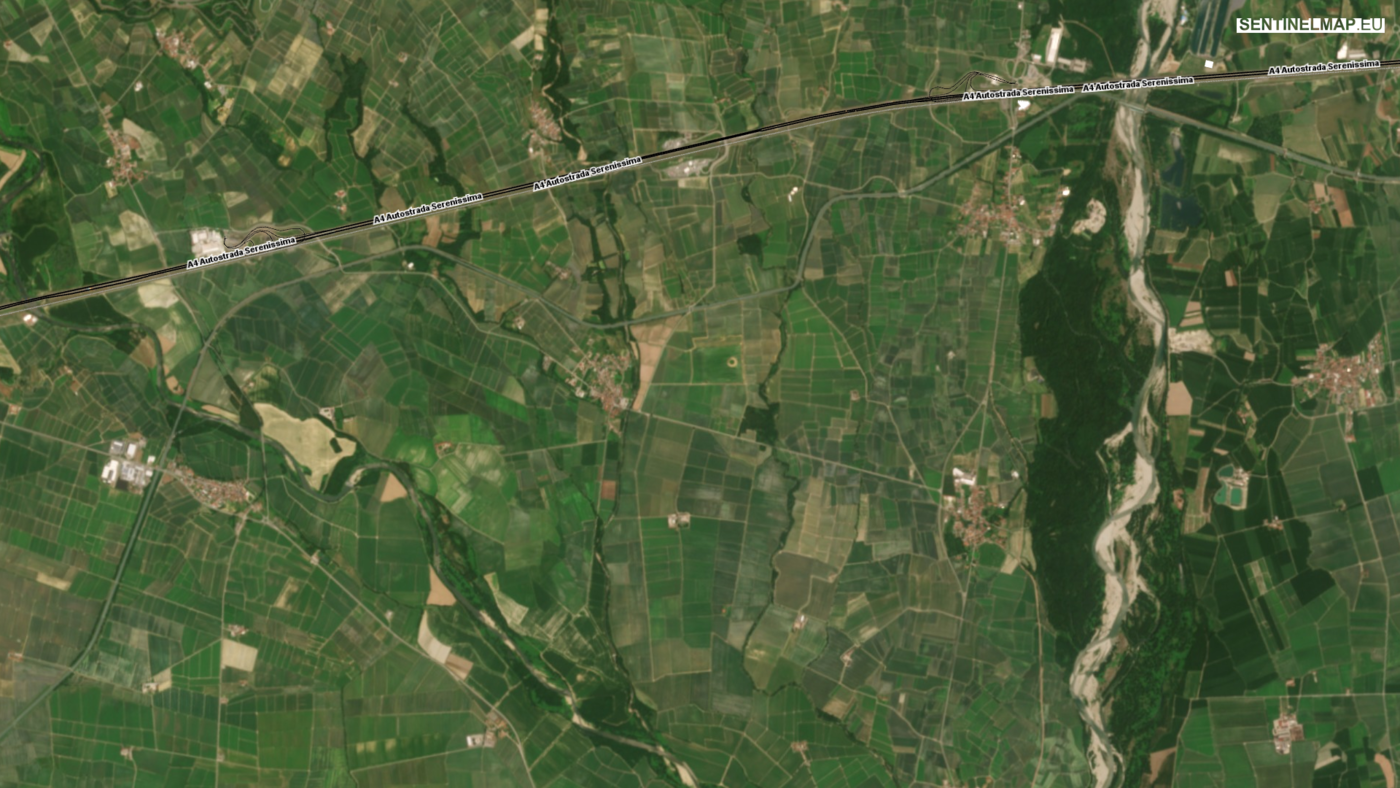
Contains modified Copernicus Sentinel data 2016 - sentinelmap.eu/#13/45.43/8.3
References:
-
Wikipedia (en): Rice
-
Wikipedia (en): Paddy field
